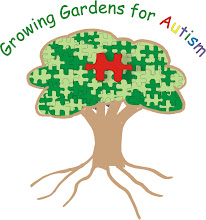Autism is currently the most prevalent developmental disorder in young children, affecting 1 in 150 children under the age of three. Because autism is a “spectrum disorder”, the symptoms present a wide range and can be difficult to fully detect. We believe that the statistics of children with autism is actually higher, but that many children have not received a formal diagnosis. Autism can be detected as early as 12 months, if parents and pediatricians are keen to the warning signs. Children who are identified early and receive intensive treatment will have the best chance for future outcomes. To date, there is no known cause or cure for autism. However, there is hope. We strongly agree with researchers when it comes to treatment…early IS essential and more IS better.
-
Although we continue to learn more about the treatment of symptoms, an overall health protocol can greatly magnify the benefits and effects of the core treatment approaches, such as traditional therapies, including speech, occupational, and applied behavior analysis. The problem lies all around us and does not apply strictly to children with developmental issues, but to every member of our society.
-
It is shocking to know that only 3% of the Western population eats a healthy diet. The major problem begins deep within our soil, which has become severely depleted of minerals since the 1930s and replaced with toxic chemicals. Add contaminated water and oxygen to the scenario and we are left with the demise of our children’s health. The abundance of processed foods with unnatural colorings, additives, and preservatives are surely not aiding the problems that our children face. Disabilities such as autism and ADHD are on the rise each year. What can we do to help our children?
-
The truth is, the body can produce everything it needs to rebuild, repair, and sustain life when it has adequate fuel. Our primary source of fuel comes from the earth and the fruits and vegetables, which are vitally necessary to help us to build a strong, disease resistant body. When properly grown, these foods are rich in minerals, vitamins, essential fatty acids, antioxidants, digestive enzymes, fiber, and more. All of these are necessary to naturally detoxify and cleanse the body, returning digestion, absorption, and metabolism to its optimum functional ability. It further allows the body to activate its own healing and regeneration abilities, returning it to a state of homeostasis.
-
Since we recognize that commercial farming may not be able to fully re-mineralize the soil, it seems like a superior choice to cultivate good, nutrient-rich soil as the foundation for our children’s life-sustaining foods. The EarthBox design offers the ability to garden the way nature intended, while providing the assurance that our children are receiving top quality, controlled foods. Studies indicate that organic foods provide more antioxidants and nutrients than non-organic foods, are easier to digest and absorb, and are free from the chemicals and toxins that may be contributing to an increase in health problems across the country.
-
Grow Gardens for Autism is a project of critical interest to those of us who are seeking answers. In addition to providing our children with a healthy start, this endeavor will lead to a multitude of opportunities, including:
-
Increased awareness of the benefits of “clean” food
Data collection and measurable outcomes
Collaboration among experts, farmers, businesses and schools
Job opportunities for individuals who have exceptionalities
Piloting an “autism-friendly” EarthBox prototype
Replication of the project in other communities

